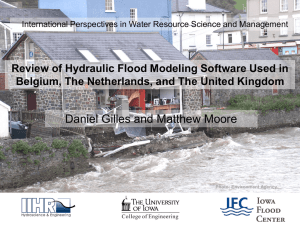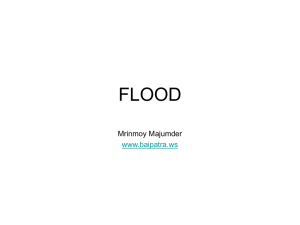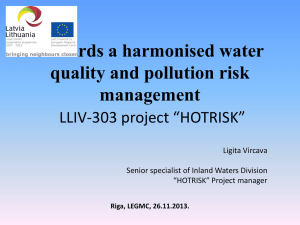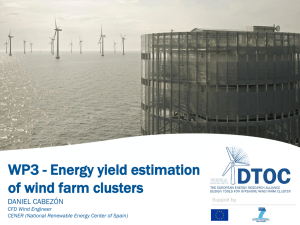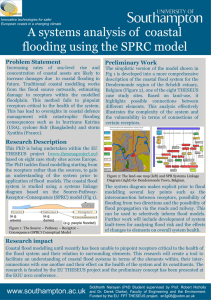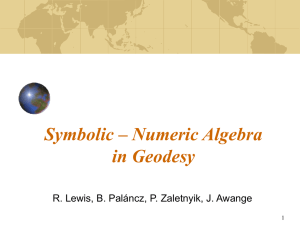Work package 3
advertisement
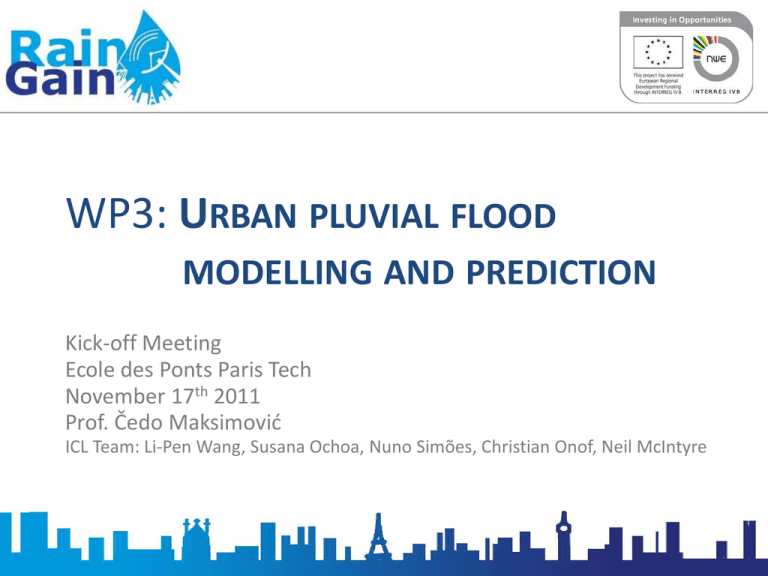
WP3: URBAN PLUVIAL FLOOD MODELLING AND PREDICTION Kick-off Meeting Ecole des Ponts Paris Tech November 17th 2011 Prof. Čedo Maksimović ICL Team: Li-Pen Wang, Susana Ochoa, Nuno Simões, Christian Onof, Neil McIntyre 1. INTRODUCTION TO URBAN PLUVIAL FLOOD MODELLING AND FORECASTING • What is urban pluvial flooding? • How to model urban pluvial flooding? • Requirements of urban pluvial flood models WP3 - INTRODUCTION Urban Pluvial Flooding Extreme rainfall events exceed the capacity of the drainage system! WP3 - INTRODUCTION Urban Pluvial Flooding Mitigation solutions? Improved Forecasting and Event Management Advanced (Water Sensitive) Urban Planning WP3 - INTRODUCTION Model Assembly for Pluvial Flood Modelling, Forecasting and Management Observations Rainfall Estimation / Forecasting Flood Modelling / Forecasting (WP3) Urban Planning / Emergency management WP3 - INTRODUCTION Modelling of Urban Pluvial Flooding – Dual Drainage Concept Effective rainfall Bi-directional interaction Surface component Sub-surface component Sewer flow WP3 - INTRODUCTION 1D / 2D To combine their advantages and overcome their disadvantages… Hybrid 1D/1D + 1D/2D simulation 1D / 1D WP3 - INTRODUCTION Do hybrid models perform well? 1D1D Hybrid 1D2D 2. OBJECTIVES AND ACTIONS OF WP3 WP3 – OBJECTIVES & ACTIONS WP3 “Connections” • The main input for flood modelling and forecasting is rainfall (WP2): the main inputs will come from WP2 • The results of WP3 are the basis for flood risk management and enhanced urban water management strategies (WP4): it constitutes one of the main inputs for WP4 WP2 WP3 WP4 WP3 – OBJECTIVES & ACTIONS WP 3 - Actions • A10: Adoption, customisation and automatic linkage of rainfall forecasts to pluvial flood models • A11: Improvement and customisation of models for urban pluvial flood forecasting at fine scales in each of the pilot locations. • A12: Full-scale testing of the models for pluvial flood prediction in each of the pilot locations • A13: Development of guidelines and training material for capacity building and training of future end-users 4. CASE STUDIES WP3 – CASE STUDIES CASE STUDY RAINFALL DATA AVAILABLE Rotterdam (NL) new polarimetric X-band radar HYDRAULIC MODELS Sobek-Urban Paris (FR) new polarimetric X-band radar ? Leuven (BE) enhanced previously acquired X-band radar and acquisition of 4 additional rain gauges Infoworks Croydon (UK) upgraded C-band radar, testing and implementation of superresolution protocol Tuflow Redbridge (UK) upgraded C-band radar, testing and implementation of superresolution protocol Infoworks Other rainfall data sources? Are the hydraulic models set up? Do they have a surface component? WP3 – CASE STUDIES UK Study Site: Cranbrook catchment The drainage area of the Cranbrook catchment is approximately 910 hectares; the main water course is about 5.75 km long, of which 5.69 km are piped or culverted. WP3 – CASE STUDIES The Cranbrook catchment is within the coverage area of two C-band radars: Chenies and Thurnham, operated by UK Met Office 5. CONTACT DETAILS Prof. Čedo Maksimović Department of Civil and Environmetal Engineering Imperial College London c.maksimovic@imperial.ac.uk Prone + 44 20 7594 6013
